Dominated By Denver, State Has 2021’s 4th Biggest Drug Problem; 20% Of Citizens Are Using Illicit Drugs
by Glen Richardson
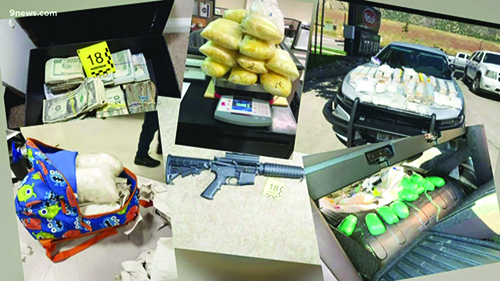
Denver Drug Dealing: In this Denver drug bust law enforcement seized 4 lbs. of meth, 5 lb. of heroin, 4 lbs. of cocaine and 155,000 fentanyl pills. A woman was charged as the drug kingpin.
When the pandemic hit last year it created the perfect storm for drug abuse and overdose deaths in Denver and Colorado. Ranked seventh in the U.S. for drug use prior to the outbreak, the pandemic created long periods of social isolation. Deaths shot up quickly among these who overdosed, their tolerance decreased by abstinence.
A new study ranking the 50 states and the District of Columbia by website WalletHub categorizes Colorado as the nation’s 4th biggest drug problem in 2021. Sadder yet, Colorado continues to rank 4th for adults who used illicit drugs in the past month. Equally troublesome, the state’s share of teenagers using illicit drugs in the past month is 5th, just one notch lower.
Moreover, the state ranks 6th for drug arrests on college campuses per 1,000 students.
Annually, more than 20% of Denver and Colorado residents will use illicit drugs. This is higher than anywhere else and equates to over a half million people abusing drugs. In Denver, a mere 2% will check into a drug rehabilitation treatment program. With so many abusing substances and so few getting help, it’s not surprising that the addiction rate is escalating. Although overdose deaths are spiraling, fewer and fewer residents in Denver and statewide are obtaining proper treatment.
First In Four Drugs
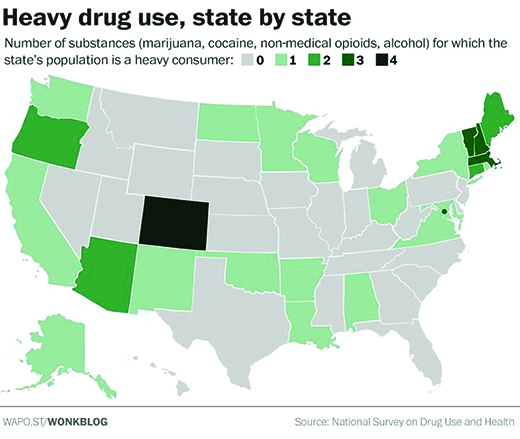
On All Four: Colorado is the only state with heavy consumption of four major intoxicants: Marijuana, alcohol, cocaine, and opioids (prescription painkillers and heroin).
Another startling fact: Colorado is the only state with heavy consumption of four major intoxicants: Marijuana, alcohol, cocaine, and opioids (prescription painkillers and heroin).
According to a study published by Denver Public Health, the percent of treatment admissions for methamphetamines doubled from 3% in 2012 to 6% in 2016; heroin admittances jumped from 4% in 2012 to 7% in 2016. The percentage of clients reporting in for marijuana as their primary substance only increased 1% during that time period.
More alarming, fentanyl-related death rates per 100,000 people quadrupled during that same time period. In Denver, overdoses involving fentanyl more than doubled in 2020 compared with 2019. And the deaths from fentanyl were seven times the number in 2018, according to the Denver medical examiner’s office. Denver Health’s Dr. Joshua Blum explains fentanyl this way: “Fentanyl is like kerosene. Methamphetamine is like natural gas.” When the pandemic came along it was like, “Let’s add some diesel fuel.”
Meth Is Murder
Methamphetamine is a very big problem in Denver and statewide. In fact, some believe it’s a bigger issue than opioids like heroin and fentanyl. According to an article by NPR, crystal meth was involved in nearly 300 overdose deaths in 2018.
Some health officials say the scariest thing about meth in Colorado is that this is one of the states where “it’s still kind of legal.” There are several possible defenses that can potentially reduce or dismiss meth drug charges.
A drug called “Desoxyn” is currently legal in Colorado (It is a Schedule II controlled substance according to the DEA.) It has effects that are disturbingly similar to crystal meth and doctors are reportedly prescribing it at alarming rates. The drug’s medical name is Methamphetamine Hydrochloride.
Meth Crimes Triple
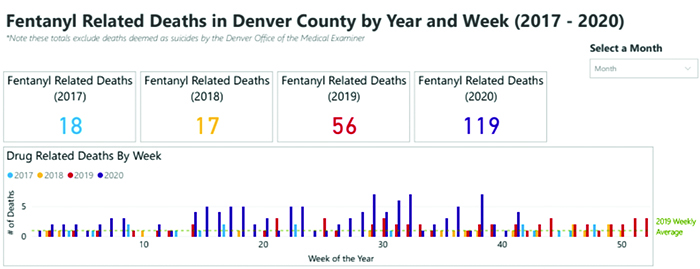
Falling For Fentanyl: Chart by the Denver Medical Examiner’s office shows the upward trend in fentanyl related deaths in Denver County from 2017 through 2020.
Meth-related crimes among adults have tripled in the last few years. It’s cheap, easy to get, and highly addictive. State-funded treatment centers in Colorado are full.
Police have successfully closed meth labs statewide, but the Mexican cartel is keeping Colorado stocked. Furthermore, law enforcement constantly confiscates large shipments along the southern borders. Notwithstanding the best efforts by law enforcement, they also readily admit that, “as long as there is meth, there will be customers using it.”
“Colorado’s overdose rates are alarming. The rate at which our friends, family members, and neighbors are dying is nothing short of an emergency,” asserts AspenRidge Recovery with locations in Lakewood, Fort Collins, and Colorado Springs. “We’ve been lucky enough to watch hundreds of Colorado residents get back on the right track.”
Drug Neighborhoods
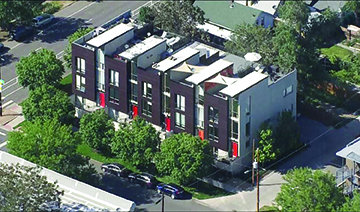
Cutting The Price: Meth labs are often found in million dollar homes and in units of apartment buildings. This Denver row home sold for just half the original $800,000 asking price after an inspector found high levels of meth contamination.
The Denver Drug & Alcohol Crime Report updated through May 10, reveals Denver has had 1,032 drug crimes so far this year. That’s an average of 243.2 crimes per month or 8.0 crimes per day.
The average number of drug crimes per neighborhood this year is 13.23. Neighborhood residents express to the Chronicle the opinion that, “drug problems are in other areas, not where we reside.” Most often mentioned is East Colfax, which actually only ranks 15th for drug crimes thus far in 2021. Two other frequently cited neighborhoods are City Park, currently ranked 40th, and Montbello, ranked 43rd.
The top five neighborhoods for drug crimes this year are Civic Center, DIA, the Central Business District, Auraria, and Sun Valley. Civic Center, with 29.96 crimes per 1,000 residents and DIA at 27.62, far outrank other neighborhoods. In comparison, Denver’s Central Business District, currently ranked 3rd, averaged only 9.88 crimes per 1,000 residents.
Take Mom’s Advice
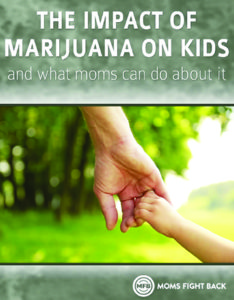
Moms Fight Back: Colorado moms tackle the pressing issues facing kids, including drugs. Online, in their neighborhoods, and with publications such as this, they provide helpful, constructive information.
For families with kids the first line of defense in the battle against drug abuse begins at home. In Colorado Moms Fight Back or MFB suggests ways families can become involved in the fight against drugs. They include Rise Above Colorado, a drug abuse prevention organization that measurably impacts teen perceptions and attitudes about the risks of substance abuse to help them make empowered, healthy choices.
The Partnership for Drug-Free Kids is another group MFB suggests. This organization translates the science of teen drug use and addiction for families, providing parents with direct support to prevent and cope with teen drug and alcohol abuse.
Lastly there’s Stay Sharp, a hard hitting prevention program designed to educate students on drug-alcohol abuse and the consequences of their choices. Information: momsfightback.org.
